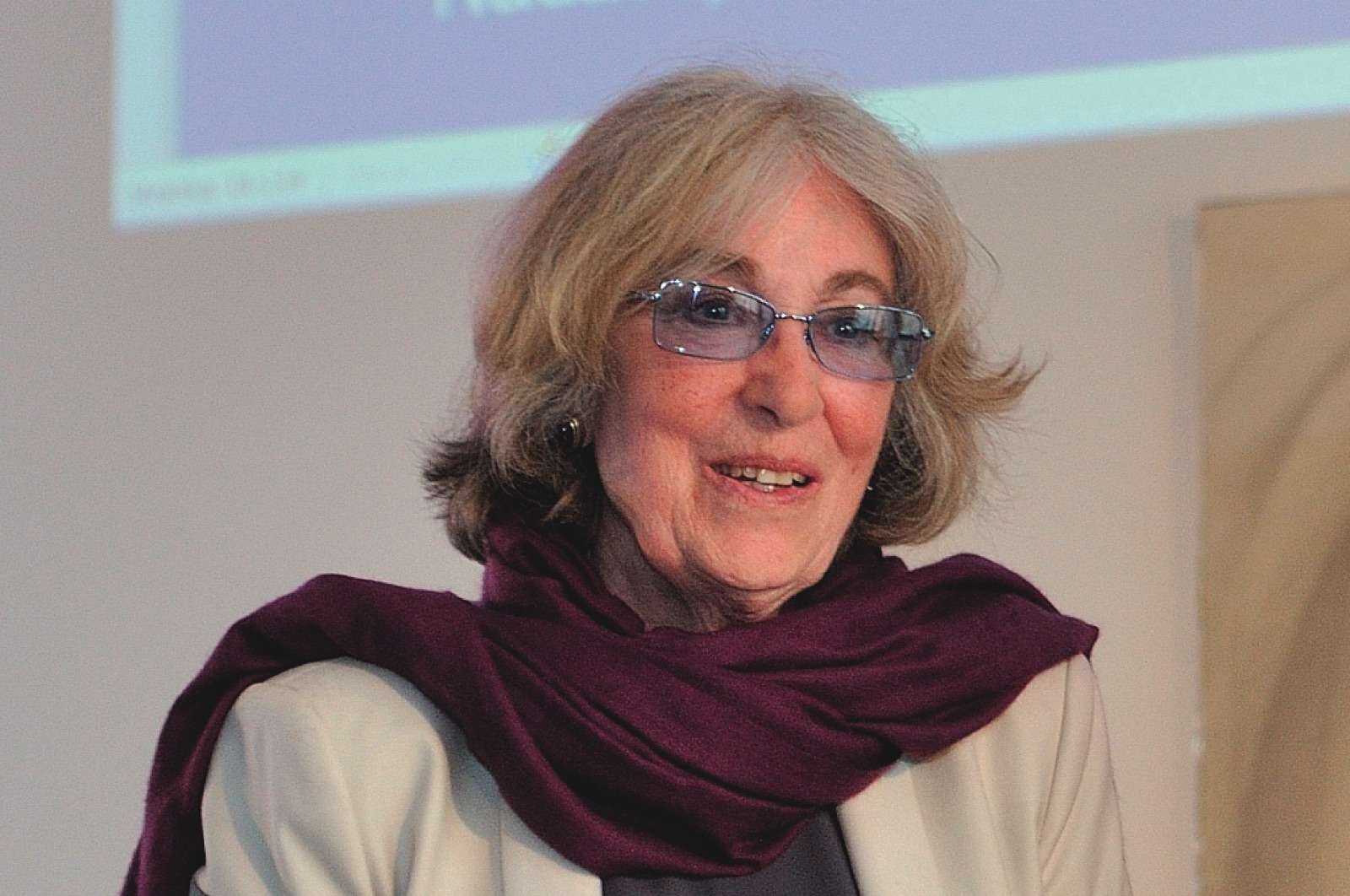
Countess Diana Phipps Sternberg
Text: Mgr. Terezie Jenisová and Martina Hošková; Photo: Archive
Diana Sternberg was born in 1936 in Vienna, Austria, but after just five days she left for Častolovice, Czechoslovakia, with her mother, Cecílie. She lived in the castle there until World War II, when the Nazis confiscated the property. She returned to Častolovice after the war. In 1948, after the Communists came to power, she went into exile with her parents. They settled in California, and later in Jamaica. In 1957, she married the American Harry Phipps, whom she met during her stay in Europe. Her husband died six years into their marriage. After that, she moved with her mother and daughter Alexandra to England, where she established herself as an interior architect. In the United States, she published a book on interior architecture that became a bestseller. After the Velvet Revolution, she also participated in the renovation of the interiors of Prague Castle and the castle in Lány. She lived in Častolovice Castle, which she regained through restitution, since 1992.
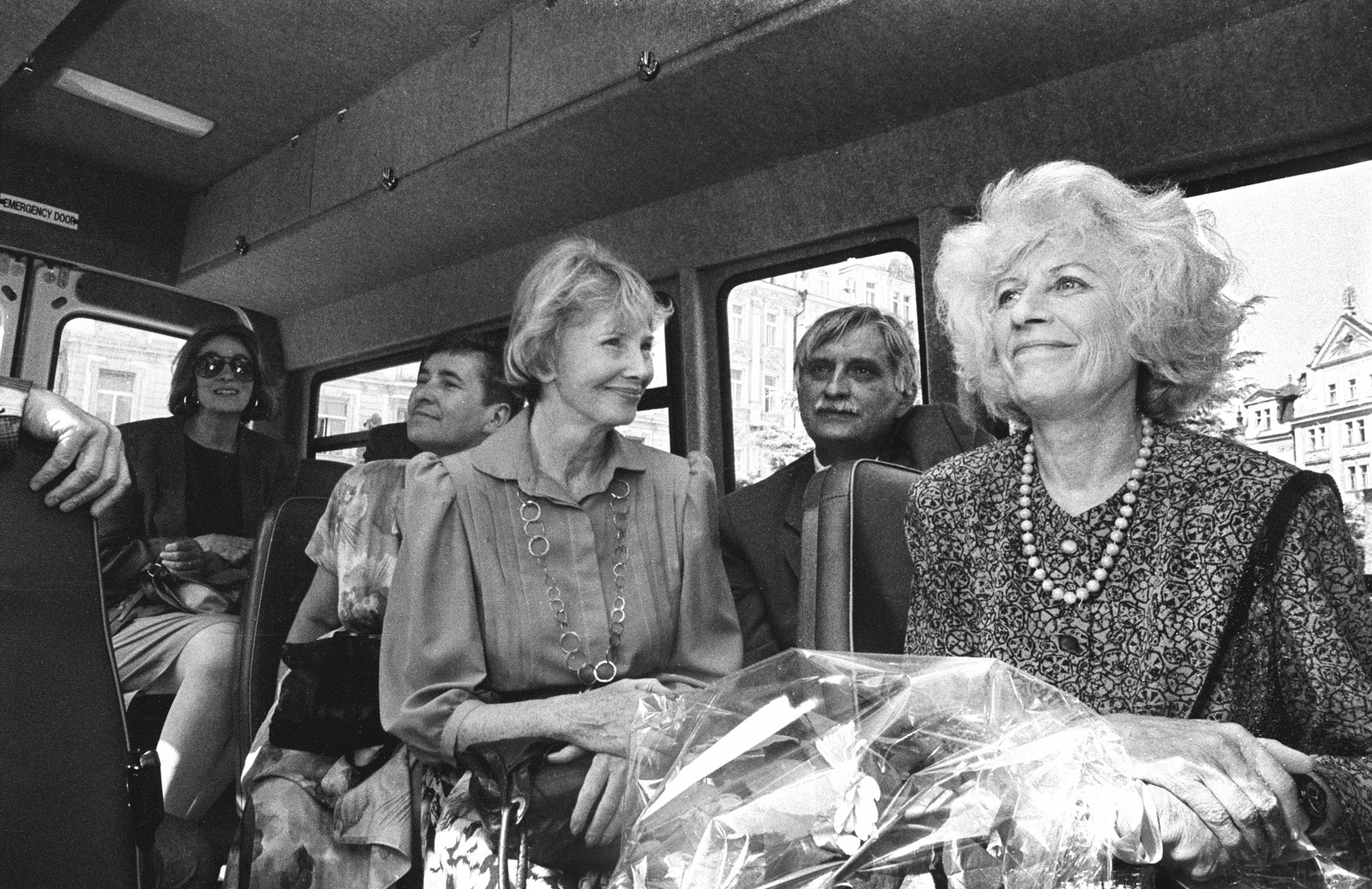
From right: First Lady Olga Havlová and Countess Diana Phipps Sternberg
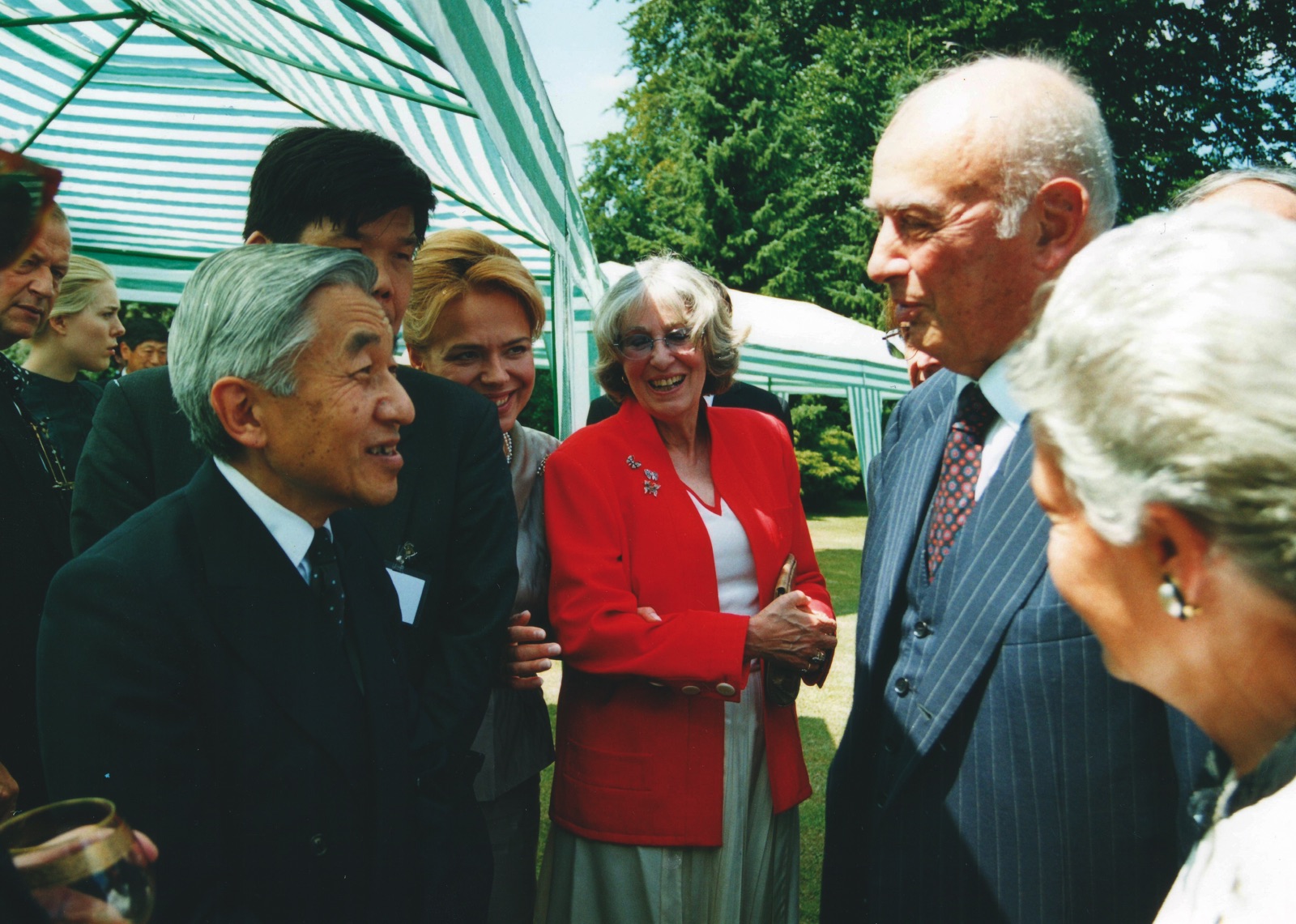
His Majesty Emperor Akihito of Japan, First Lady Dagmar Havlová, Countess Diana Phipps Sternberg, and H.E. Mario Quagliotti with Countess Mathilda Nostitz
Mrs. Diana Sternberg first met Mrs. Olga Havlová in 1988. At the time, she was in Prague with a group from the Helsinki Committee, and they went to visit the Havels. She recalled that moment: “We were quietly and in the dark walking down the stairs to ensure our presence didn’t endanger anyone. When we were halfway down the steep climb, the entire staircase lit up. A beautiful woman stood on the landing and asked, ‘Why are you walking in the dark? Can’t you turn on the light?’ And that was Olga Havlová for me. Practical and logical, smart, unsentimental, and witty.”
The friendship between the two women began in June 1989 at Hrádeček, where they came with friends Harold Pinter and his wife to visit Václav Havel during his house arrest. Later, Olga and Diana started visiting social institutions and healthcare facilities together, trying to help people living there as discarded individuals, disconnected from life, as well as people outside of the walls of those facilities. The worst, they thought, were the institutions full of elderly people, and the homes for children who were confined there. They were helping them even before the Good Will Committee was formally established.
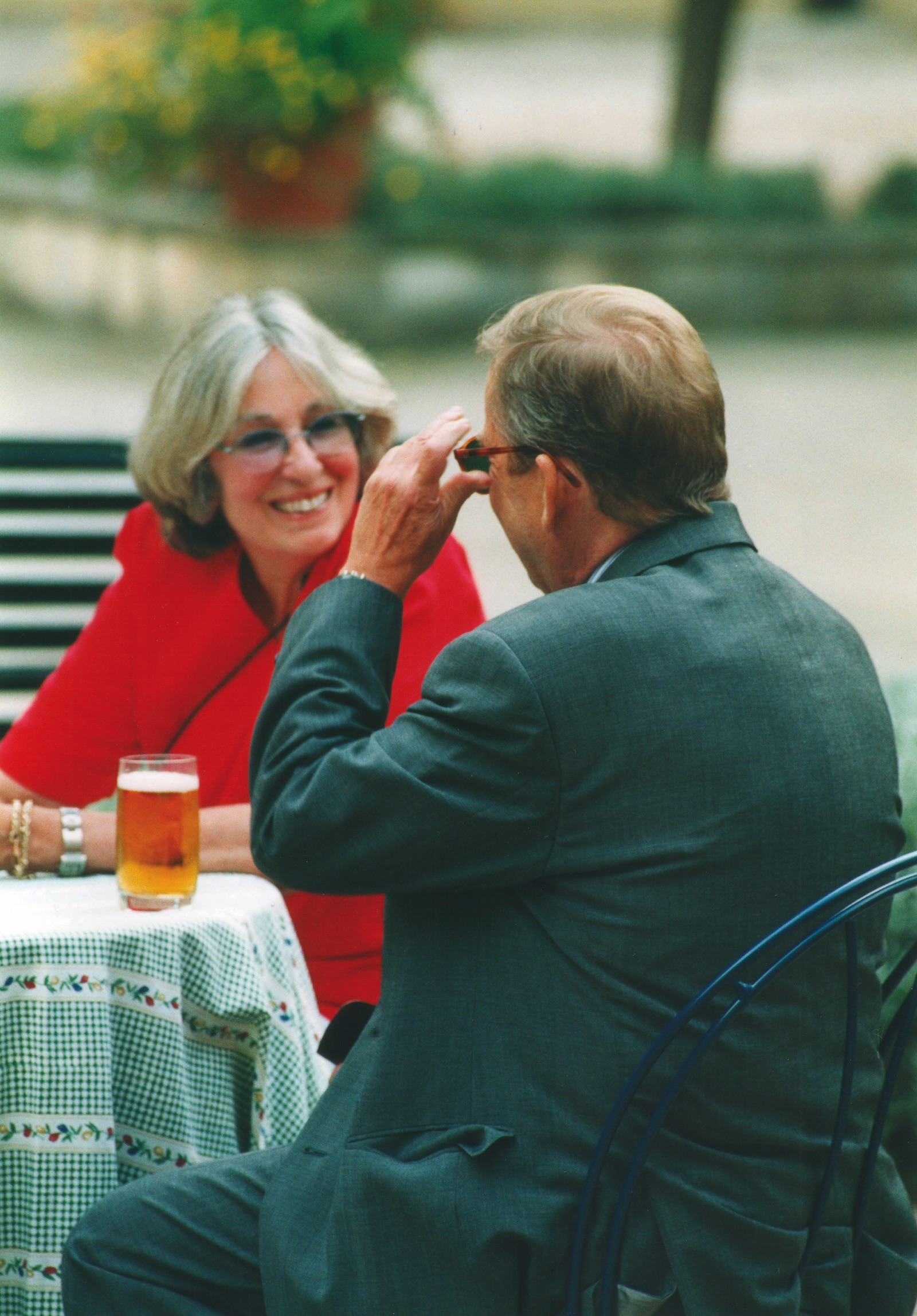
President Václav Havel and Countess Diana Phipps Sternberg
Diana Sternberg spent a quarter of a century alongside the Good Will Committee as a member of the foundation’s board. She was involved in the establishment of its sister organizations in England and the USA. She always held great respect for the people in leadership roles at the foundation. She felt guilty for not being able to adhere more closely to Olga’s example, learning about those in need only through paperwork rather than meeting or talking to them in person. “That is a flaw in my character – I am ashamed that I cannot be public. Olga Havlová also suffered from this, but because of her position, she had to be more disciplined,” explained Mrs. Diana.
Mrs. Diana had a very good awareness of charity in general. She considered charity in America to be very solid and heartfelt. She saw Americans as people with very good hearts and striving to be socially visible; plus, the tax advantage of giving donations played a significant role there as well. When she moved to London, she encountered a different kind of charity. “More is done here, and less is talked about. I had a friend who visited prisoners once a week her whole life and talked with them. Other women go to the hospitals – they are called ‘book ladies’ – and they bring along a stroller with a small library. The patients either choose a book to read themselves or the ‘book lady’ reads a selected book for them. You can’t say which activity is more important. Every help is good,” noted Mrs. Diana. She was pleased that the approach to charity in the Czech Republic was gradually improving. She had great sympathy for people fleeing their homes to escape danger, and kept reminding us of the help provided in other countries to Czechoslovaks who emigrated.
At her ancestral castle in Častolovice, Mrs. Diana regularly received children from the Sun Foundation, which she was taken to at its opening in 1991 by Olga Havlová. She loved the kids, and hoped that it was mutual. She always looked forward to their visits. “We dance, we sing, we have clowns and plenty of food.
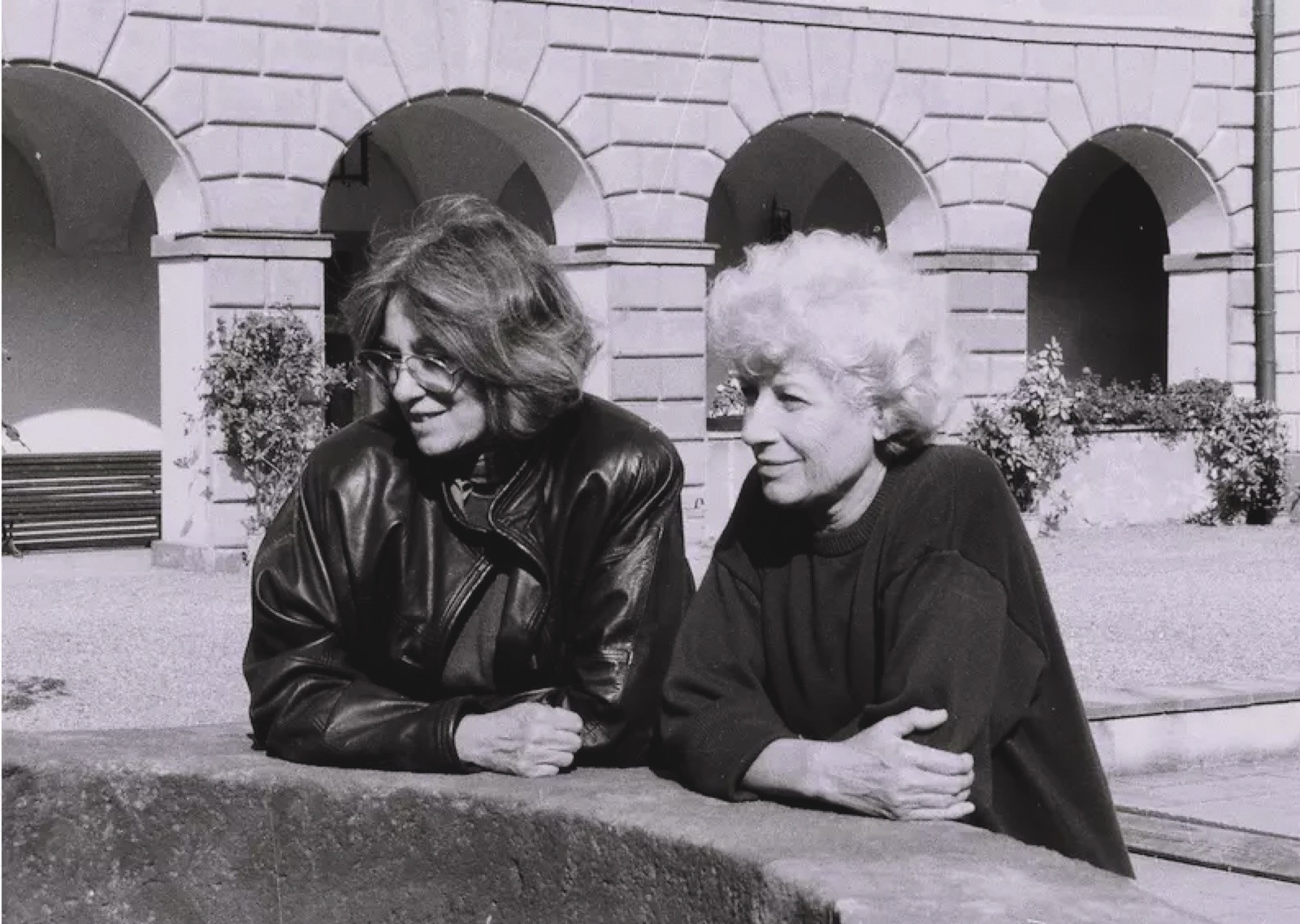
Countess Diana Phipps Sternberg and First Lady Olga Havlová
It’s cheerful,” she described the meetings with the children. She greatly admired the work of the foundation’s director, Doctor Blanka Dvořáková, attributing to her success the fact that ‘her children’ with combined disabilities navigate life without awareness of their handicap. She also collaborated with a shelter for parents with children in nearby Kostelec. For disabled visitors, she provided a stair climber at Častolovice Castle, and designed tours for the visually impaired with the opportunity to touch everything.
Diana Sternberg loved literature and music, claiming that she could not live without them. Nature filled her with positive energy. In Častolovice, she built a mini zoo, aviaries for birds, a shelter for sick swans, established both a rose garden and a water garden, and planted new trees for the future of the castle park, which is very popular among visitors.
In 2015, Diana Sternberg ended her active involvement with the Good Will Committee – Olga Havlová Foundation. She withdrew from public view but continued to support its activities with generous donations. She died on July 31st, 2024, two minutes before midnight, in a Vienna hospital, surrounded by her close family.

